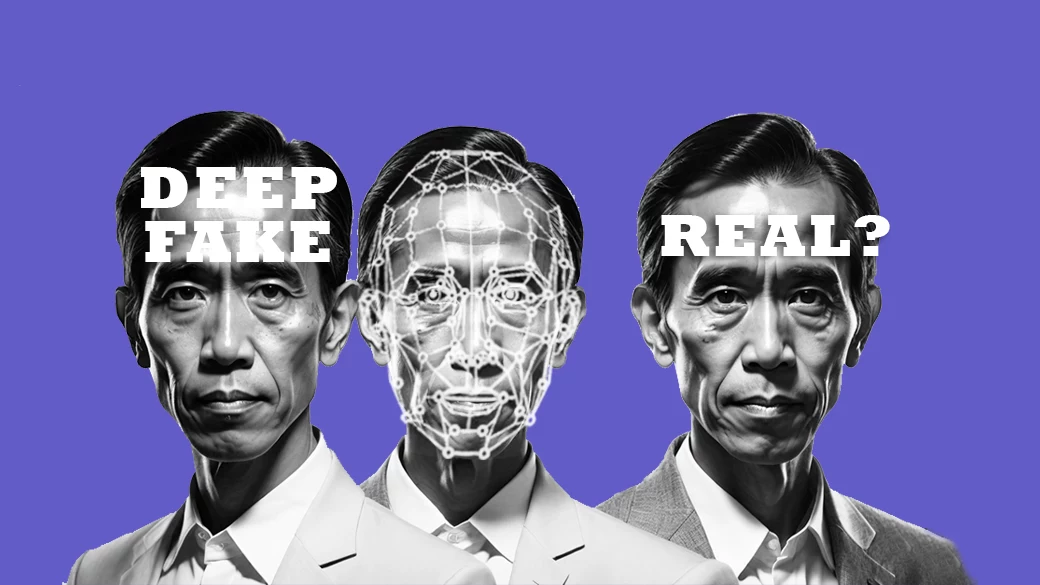On March 26, Pastor Enoch Adeboye, the head pastor of the Redeemed Christian Church of God, released a public circular debunking deepfake videos of him promoting drugs and scholarships. Shocking as it seems, such manipulated clips have become rampant on social media in recent times.
The debut of ChatGPT in 2022 heralded the golden age of artificial intelligence. AI promised to get done in minutes what would typically take hours to complete. The range continues to broaden as more LLMs emerge. Today, AI can not only generate hyperrealistic images but even fake videos of people saying things they never actually said.
Despite this convenience, the accessibility of AI tools means almost anyone with basic tech skils–scammers, trolls and even teenagers–can use AI to create deepfakes that spread misinformation, commit fraud, and manipulate public opinion.
Chances are, that video of a celebrity promoting a shady crypto scheme or hyping some miracle health product was developed with AI. Yet it doesn’t require any technical genius to spot a deepfake even as AI gets more sophisticated. Below are a few telltale signs to train your eye for.
Check the eyes—They Usually Don’t Lie.
AI still struggles with creating natural eyes. In deepfake videos, blinking may be unnatural—rather slow or too fast. Some early AI-generated faces don’t blink at all! Also look for strange reflections or inconsistent lighting in the eyes. Realistic eyes have depth and subtle shifts in light—AI often flattens them.
Watch for Weird Skin Textures and Blurring
AI-generated faces often betray overly smooth skin, unnatural shading, or odd blurring around edges, like where the face meets the hair or background. Some deepfakes also struggle with fine details like teeth, hair strands, or jewellery, making them look warped or smudged.
Pay Attention to Lighting and Shadows
Lighting is tricky for AI. If shadows don’t match the light source , for example, a face is brightly lit but the background is dark for no reason, that’s a red flag. Also, watch for inconsistent reflections in glasses, earrings, or shiny surfaces—AI sometimes warps these.
Listen for Robotic Speech or Odd Mouth Movements
In deepfake videos, lip-syncing can be slightly out of sync, or the voice might sound just a little too monotonous. Some AI voices pause unnaturally or mispronounce words. If a clip of a famous person sounds like they were fumbling with their sentences, then you should be suspicious.
Watch for Glitches in Hair and Backgrounds
As said earlier, AI often struggles with fine details like flyaway hairs, intricate patterns, or complex backgrounds. Look for hair that merges strangely with clothing or a background that warps slightly when the person moves. Also, check for repeating patterns, such as tiles or wallpapers, that appear inconsistent.
Use Reverse Image Search
If you see a shocking image that looks too good to be true, do a quick reverse image search on Google. Many AI-generated images are recycled or slightly altered versions of existing ones. If the same face pops up under different names, it’s likely fake.
Trust Your Guts
If something feels off, it probably is. AI is getting uncannily good, but most deepfakes still leave tiny flaws. It would be proactive to ask yourself questions like, Does this person usually post content like this? Is the source trustworthy? Why would they be saying or doing this?
Be Skeptical and Stay Safe
Sadly, AI isn’t going anywhere—neither are deepfake scams. But the more you train yourself to spot the signs, the harder it’ll be for these fakes to fool you. While these tips will keep you ahead of the curve, staying updated will ensure you’re never left behind in the constantly eveolving world of AI.
Pastor Enoch Adeboye of the Redeemed Christian Church of God issued a warning against deepfake videos falsely portraying him promoting drugs and scholarships, highlighting the rise of manipulated media through artificial intelligence (AI). The introduction of AI tools like ChatGPT in 2022 ushered a new era where AI can create convincing yet fake imagery and videos, making misinformation widespread. Accessible AI technologies allow virtually anyone, including scammers and trolls, to generate deepfakes with the potential to mislead the public.
Identifying deepfakes involves noting certain indicators: unnatural blinking and eye reflections, odd skin textures or blurring edges, inconsistent lighting and shadows, robotic or misaligned speech, glitches in hair and backgrounds, and repeating patterns. Conducting a reverse image search can reveal whether images have been recycled or slightly altered. It's also essential to trust instincts if content seems suspicious, asking whether the source is credible and content aligns with known behaviors.
Despite the persistent threat of deepfake scams, individuals can safeguard themselves by being vigilant and questioning authenticity. Remaining educated on AI advancements will help users recognize deceitful content, emphasizing that awareness and skepticism are crucial in navigating this evolving digital landscape.






